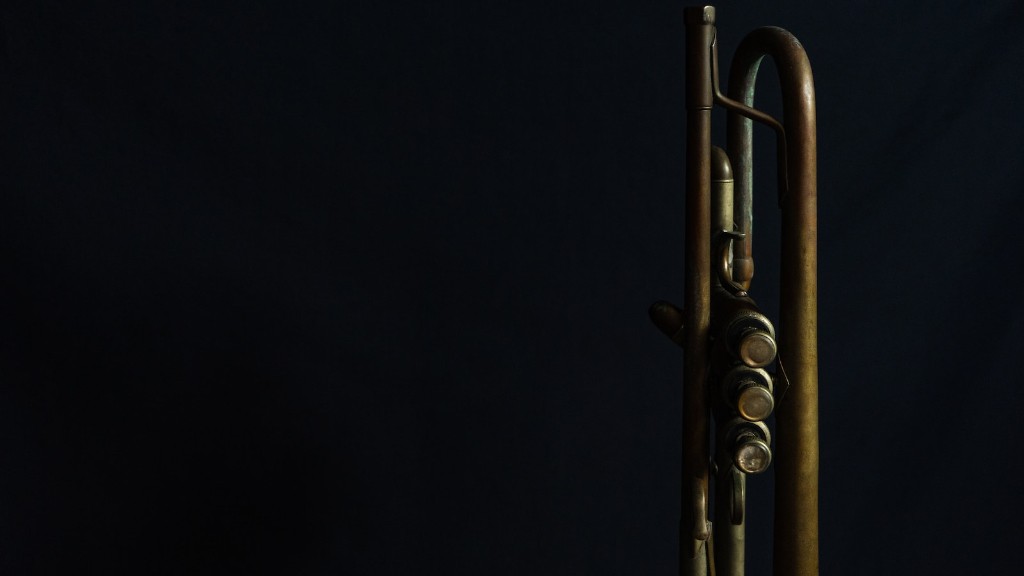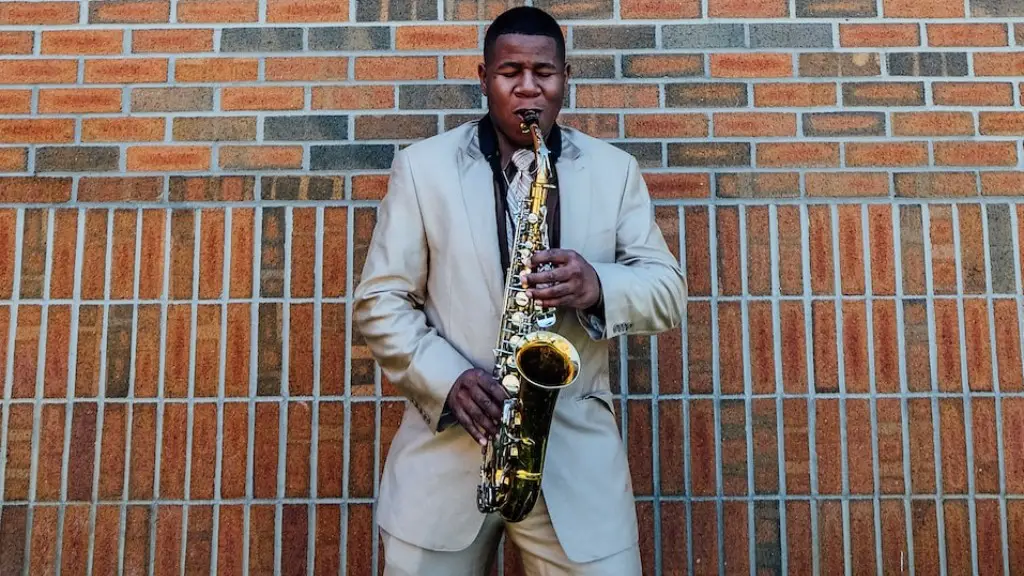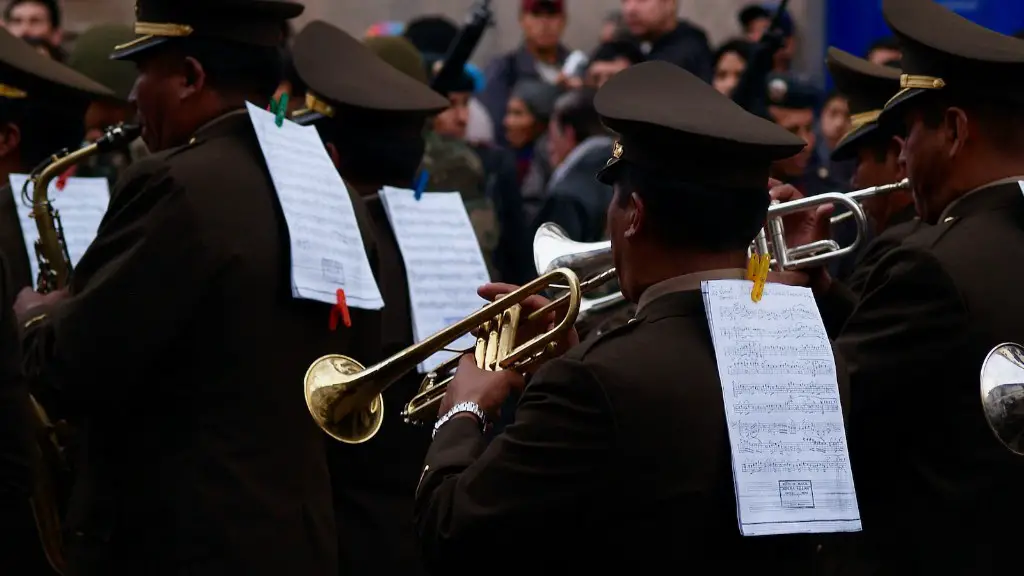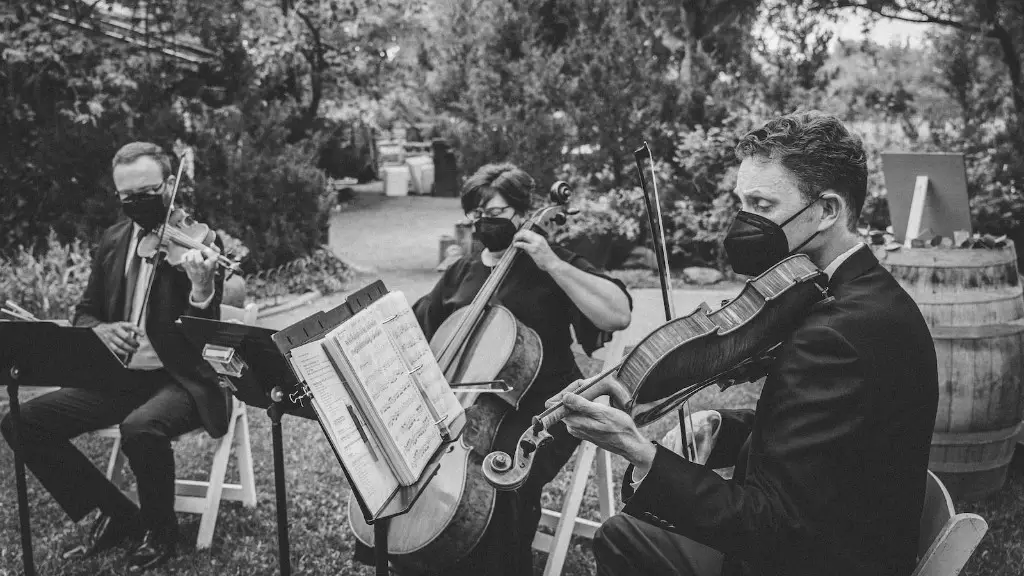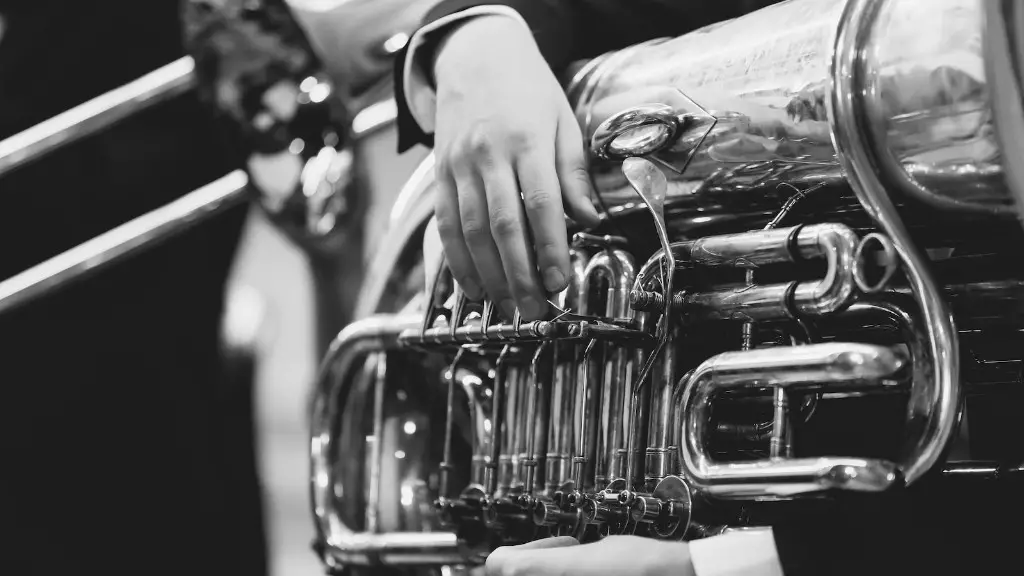The trumpet is a brass instrument that has been around for centuries. It has been used in countless genres of music, from jazz to classical. Its sound is very distinct, and can be heard from far away with its loud, bright tone. The trumpet has a wide range of tones from high pitched to low and mellow, making it a versatile instrument for different types of music.
When playing the trumpet, the musician uses their lips to vibrate their mouthpiece, which produces the sound. This is why it’s important for trumpeters to practice proper embouchure technique in order to produce a clear and accurate tone. Playing with good technique will also allow the player to create various dynamics such as crescendos and diminuendos.
The sound of the trumpet can also be influenced by what type of mouthpiece is used. Different sizes and shapes will produce different sounds due to how they vibrate in the player’s mouth. The type of instrument can also affect the sound, as some trumpets have more brightness than others.
In summary, the trumpet sounds like a loud and bright brass instrument that has a wide range of tones and dynamics depending on how it’s played. Its distinct sound has been used in many styles of music over centuries and continues to be an important part of orchestras around the world today.
What Does Trumpet Sound Like?
The trumpet is a versatile instrument, capable of producing a wide range of sounds. It has a bright, brassy tone that can be both loud and powerful or soft and subtle. It is often used to play melodies and solos in jazz, classical, and pop music. The sound of the trumpet also has an emotional quality that can add depth and feeling to music. Trumpets can also be used for sound effects such as alarm calls or military marches.
The trumpet’s sound is generated by vibrating air through its metal tubing and valves. The player can control the tone by adjusting their breath, embouchure (mouth shape), posture, and fingerings on the valves. Different combinations of these variables will create different sounds from the trumpet. For example, a fast-moving air stream will produce a sharp attack with a bright tone while a slow-moving air stream will produce a fuller sound with more sustain. The player can also use mutes to alter the sound of the instrument further.
The trumpet is an iconic instrument with an unmistakable sound that has been used in countless musical genres over the centuries. From its bold tones to its emotive qualities, it’s no wonder it has remained a popular choice among musicians.
The Bold, Bright Sound of the Trumpet
The trumpet is a brass instrument known for its bright and bold tone. It is one of the oldest instruments in existence, with a rich and varied history. The trumpet has been used in many genres, from jazz to classical music, and even in popular music. Its sound is powerful and versatile, able to convey emotion and excitement with its bright notes. The trumpet can be used to create a variety of sounds, from warm and soulful melodies to intense solos. The instrument also has the ability to create a wide range of dynamics, from gentle whisper-like notes to blasting fanfares. No matter the style or genre, the trumpet’s vibrant sound will always be unmistakable and unforgettable.
The trumpet’s sound is truly unique and captivating – that’s why it has been used in music for centuries. Whether you are a professional musician or just starting out on your journey as an amateur musician, playing the trumpet can bring immense joy and satisfaction. So why not explore this wonderful instrument today? You’ll be rewarded with its bold and beautiful sound.
Different Types of Trumpet Sounds
The trumpet is a versatile instrument and can produce many different sounds. From melodic, lyrical passages to bold, powerful fanfares, the trumpet can be used in a variety of musical styles and genres. Its sound ranges from bright and piercing to mellow and gentle. When playing the trumpet, musicians can create an array of different tones by using a range of articulations such as slurs, staccatos and vibratos. They can also alter the sound using mutes or by manipulating their embouchure. The trumpet can play both high-pitched notes as well as low-pitched ones, giving it an impressive range of tones. With its bright sound, the trumpet is a great choice for jazz, classical and pop music alike.
The trumpet has been used in orchestral pieces since the Baroque era and its sound has become iconic over time. This regal instrument is often used to play fanfares, signaling important events or occasions with its bold and triumphant sound. It is also popular in jazz music where it produces bluesy solos with a unique warmth that sets it apart from other instruments. In classical pieces, trumpets are often heard playing long melodic lines that soar above the orchestra with their bright tones. No matter what type of music you enjoy listening to or playing, you’re sure to find something special about the trumpet’s distinctive sound!
The Sound of Trumpet
The trumpet is a brass instrument known for its loud, bright sound. It produces sound when air is blown through the mouthpiece, vibrating the lips and creating vibrations through the instrument. The player can control the volume and tone of the sound by varying their breath and pressure on the mouthpiece. The trumpet also has three valves which can be used to change the notes that are being played. The trumpet is commonly used in jazz, classical, and popular music as it can provide a powerful lead melody as well as backing accompaniment. It has been said that a good trumpet player can produce almost any sound imaginable. The trumpet’s range includes all of the notes from low to high, making it one of the most versatile instruments around.
Amplification of Trumpet Sound
The trumpet sound is one of the most recognizable instruments in the world, and it has been used for centuries to make music. The trumpet produces a unique sound that is loud and powerful, but it can also be subtle and delicate. Amplifying the sound of a trumpet can be done in several ways, including through the use of electronic equipment such as amplifiers and speakers. It is also possible to increase the volume of the trumpet naturally by playing into a larger space or by using a microphone to capture more of the sound.
No matter how you choose to amplify your trumpet sound, you must take into consideration both your playing ability and the acoustics of your environment. Proper positioning and microphone placement can have a huge impact on how your trumpet sounds. If you are using electronics, be sure to adjust the levels correctly so that you don’t distort or damage your instrument’s tone. Additionally, if you’re playing in an enclosed room or hall, consider adding acoustic panels or other materials to help absorb some of the sound for better clarity. Experimenting with different techniques and equipment is key to finding out which amplification method works best for you.
Trumpet Sound and Range
The trumpet is a brass instrument that produces a bright, vibrant sound. It is used in a variety of musical genres, including jazz, classical, and popular music. The sound of the trumpet is characterized by its strong presence and its ability to project over other instruments. The range of the trumpet is quite wide, spanning three octaves from its lowest note to its highest note. Its possibilities are limitless, from melodic lines to powerful blasts of sound. The trumpet can also be used for muted effects for subtlety and nuance.
The trumpet can be played with mutes to change the tone color and add texture to the sound. Mutes are usually constructed from metal or plastic and placed in the bell of the instrument. This can help to create an entirely different soundscape than what would normally be heard with an unmuted instrument.
The trumpet is also capable of playing very high notes as well as low notes. High notes require a greater amount of air pressure while low notes require less air pressure. In addition to this, the player must ensure their technique is correct in order to produce a clear sound across all registers on the horn.
Overall, the trumpet has become one of the most widely recognized instruments in both popular and classical genres due to its versatility and unique sound. Whether being used as a solo instrument or as part of an ensemble, it’s sure to bring life to any piece of music!
Closing Words
To sum it all up, the sound of a trumpet is one that has been heard for centuries and is present in many different genres of music. Whether it is a traditional jazz solo or an orchestral fanfare, the trumpet’s distinct tone and sound are unmistakable. Its unique characteristic allows it to be used in a variety of settings and can be used to create a variety of sounds. Its ability to produce high-pitched notes makes it one of the most recognizable instruments in music today. The trumpet may look simple, but its sound can truly captivate any audience.
